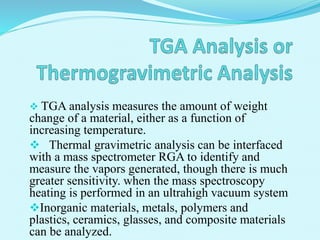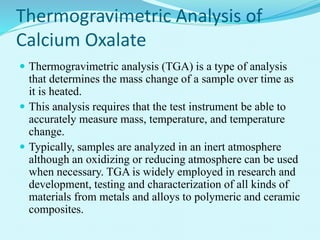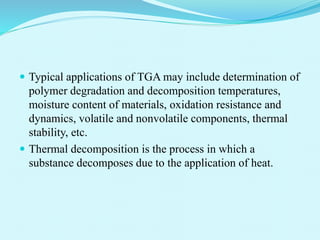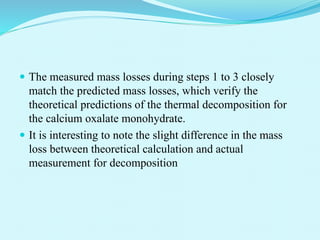1) Thermogravimetric analysis (TGA) measures the weight changes of a material as it is heated in different atmospheres. It can be used to analyze inorganic materials, metals, polymers, ceramics, and composites.
2) The document describes using TGA to analyze the thermal decomposition of calcium oxalate monohydrate. Calcium oxalate monohydrate decomposes in three steps as it is heated.
3) The measured mass losses at each step of decomposition closely matched the theoretical predictions, validating the predicted thermal decomposition reactions of calcium oxalate monohydrate.















